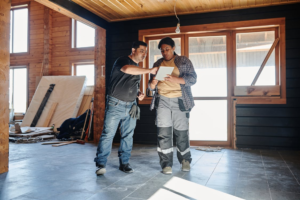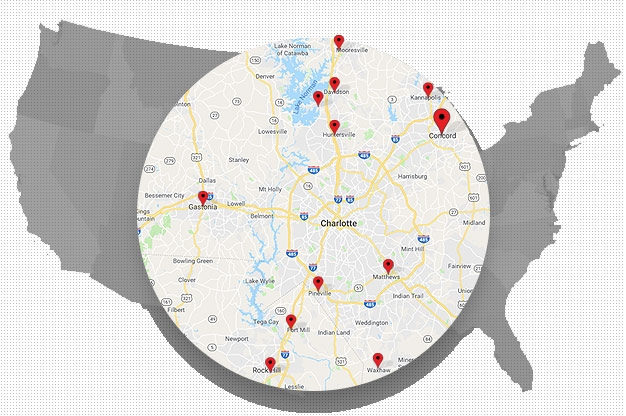7 Environmental Benefits of Waterproofing

We all agree that there are many ways to help combat climate change. There are various solutions to reduce plastic pollution and planting trees to reduce air pollution. However, do you know that waterproofing your home has multiple benefits to the environment?
Waterproofing concrete and various areas of your property can help improve your sustainability. Here are seven environmental benefits of waterproofing and why you should take a close look.
1. Reduces Erosion of Building Materials
Most homes use concrete as a foundation or material for their brick walls. When water infiltrates concrete, it acts as a catalyst for the breakdown of the cement, causing cracking, spalling, and expansion. This rings true, especially for commercial properties.
Since breaking down the construction materials also involves the extraction of carbon dioxide from the atmosphere, the process releases greenhouse gases that contribute to global warming. By waterproofing your concrete walls, you reduce the chances of having toxic chemicals returning to the soil.
While you protect your walls from having water seep in, you also prevent its breakdown from continuous weathering. You also reduce having pieces break off, avoiding any soil contamination. By protecting your assets from water damage, you save the surrounding environment from having your walls erode.
2. Reduce The Effects Of Heat Island Transfer
The entire world faces the heat island effect, where urban areas are warmer than their rural counterparts. The effect is caused by the numerous black surfaces in urban areas, such as asphalt and rooftops.
These dark materials absorb large amounts of heat energy from the sun. The energy is then retained over longer periods and radiated to the surrounding areas. All this construction contributes to higher air temperatures in urban centers.
When these surfaces are not waterproof, they absorb the warm temperatures and radiate them into the atmosphere. This contributes to heat waves, especially in areas with limited vegetation.
By protecting your roof with waterproof coatings, you reduce heat transfer effects. You extend the lifespan of roofing materials and decrease the need for replacements.
3. Suppresses Algae Growth In Ponds & Waterways
In areas close to water bodies, algae can wreak havoc in ponds and waterways. This can result in discoloration and damage to pond liners, boats, and other marine equipment. The presence of nutrients and other chemicals in the water promotes the growth of these organisms.
The constant presence of moisture encourages the growth of these organisms. By sealing the cracks on the exterior of your home or business, you’re preventing water from penetrating your property. This will suppress any growth of fungi, bacteria, and other microorganisms.
How does this help the environment?
By coating your ponds and waterways, you reduce the amount of sunlight that reaches the interior. You reduce the chances of algae invading the local ecosystem, which can cause local marine animals to suffocate. It also lowers the chances of having algae covering sunlight that filters underwater.
4. Creates An Energy Efficient Property
When a property does not have proper waterproofing, it loses more energy, which translates into an increase in utility bills. If you don’t consider insulating your building, you stand to lose up to 15% of your energy to uninsulated air leaks.
Water leaking into your home has a direct impact on your energy bills. When water leaks into your house, it increases your heating, cooling, and lighting consumption. Over 70% of energy consumption in a typical home can be attributed to heating and cooling. By adequately waterproofing your walls and ceilings, you add an extra level of protection.
By improving your waterproofing all around, especially on your roof and foundation, you boost your home’s energy efficiency. The improvement in temperature retention, especially during summer, helps reduce energy demand.
By reducing the amount of energy required to heat and cool your building, you reduce your carbon footprint. Lower greenhouse gas emissions mean you contribute to a greener planet. Big businesses use this to add sustainability to their company culture, which further improves productivity.
5. Improves Structural Integrity of Your Property
The structural integrity of a building depends on its walls and roof. When these surfaces are damaged, the entire structure can collapse.
Apart from the impact of water and humidity, structural degradation can be caused by the presence of snow, debris, and insects. These elements can cause structural damage and create openings that invite insects and rodents.
By keeping your property waterproof and free of pests, you improve the quality of your construction. It ensures that your structure is intact and doesn’t experience any deterioration in quality. By helping your property last longer, the less renovation you need. Less renovation means fewer materials consumed to be transformed into housing.
6. Extends Service Lifetime Of Materials
The last thing you want is to replace your building materials sooner than necessary. If you skimp on your home improvement and maintenance, you increase the chances that you’ll need to replace them.
A leaky home is easy to spot. Most homeowners notice the damage before it goes out of hand. This allows them to repair the leak before it causes more damage. By repairing such damages in time, you extend the life of your roofing and siding. This helps you save money and avoid investing in unnecessary repairs.
Even beyond your home, waterproofing your home means you replace everything even less. The lower your overall consumption becomes, the more you benefit the environment.
7. Helps Maintain A Clean Environment
The environment doesn’t only benefit from reduced waste. An eco-friendly home preserves the quality of its external appearance while keeping its overall integrity. By providing safe conditions for inhabitants, you maintain a high level of sanitation. This improves your living conditions and boosts your productivity.
Waterproofing helps you keep a more sanitary environment around your home. It helps improve air quality in your home by preventing moisture from accumulating. Waterproofing can also help reduce dust particles from going through the nooks and crannies of your home.
When your home is dry and free from mold and mildew, it helps maintain a healthy environment. This improves indoor air quality, which is vital if people live in your vicinity. A healthier environment equates to cleaner surroundings and less pollution overall.
The Bottom Line
Waterproofing goes beyond saving your family and property from the harmful effects of moisture and flooding. It can also help you contribute towards saving the environment by reducing your consumption and keeping your surroundings clean and healthy.
By waterproofing your home, you reduce your carbon footprint, cut your energy consumption, and help keep a sanitary environment. All these should be a win-win for you and the environment, so start waterproofing your property today.
Learn more about Sedona Waterproofing Solutions.
Recent Posts
- How Crawl Space Encapsulation Benefits the Environment – An Expert Guide
- 6 Ways Professionals Keep Your Crawl Space in Top Shape
- Structural Repair Solutions for Crawl Spaces, Basements, and Foundations
- Essential Crawl Space Repair Tips Every Homeowner Should Know
- The Importance of Radon Mitigation: Ensuring a Safe Living Environment for Homeowners
Categories
- Basement Mold
- Basement Waterproof Foundation
- Basement Waterproofing
- Crawl Space Dehumidifier
- Crawl Space Encapsulation Cost
- Crawl Space Repair
- Crawl Space Waterproofing
- Encapsulation
- Foundation Repair
- Foundation Waterproofing
- French Drains
- Leaky Basement
- Mold Remediation
- Mold Removal
- Radon
- Slab Jacking
- Sump Pump
- Uncategorized
- Vapor Barrier
- Water Leak
- Waterproofing
- White Mold
Archives
- June 2024
- May 2024
- March 2024
- January 2024
- June 2023
- May 2023
- April 2023
- March 2023
- February 2023
- January 2023
- December 2022
- November 2022
- October 2022
- September 2022
- August 2022
- July 2022
- June 2022
- May 2022
- March 2022
- February 2022
- January 2022
- December 2021
- November 2021
- October 2021
- September 2021
- August 2021
- July 2021
- June 2021
- May 2021
- April 2021
- March 2021
- February 2021
- January 2021
- December 2020
- November 2020
- October 2020
- September 2020
- August 2020
- July 2020
- June 2020
- May 2020
- April 2020
- March 2020
- February 2020
- January 2020
- December 2019
- November 2019
- October 2019
- September 2019
- August 2019
- July 2019
- June 2019
- May 2019

